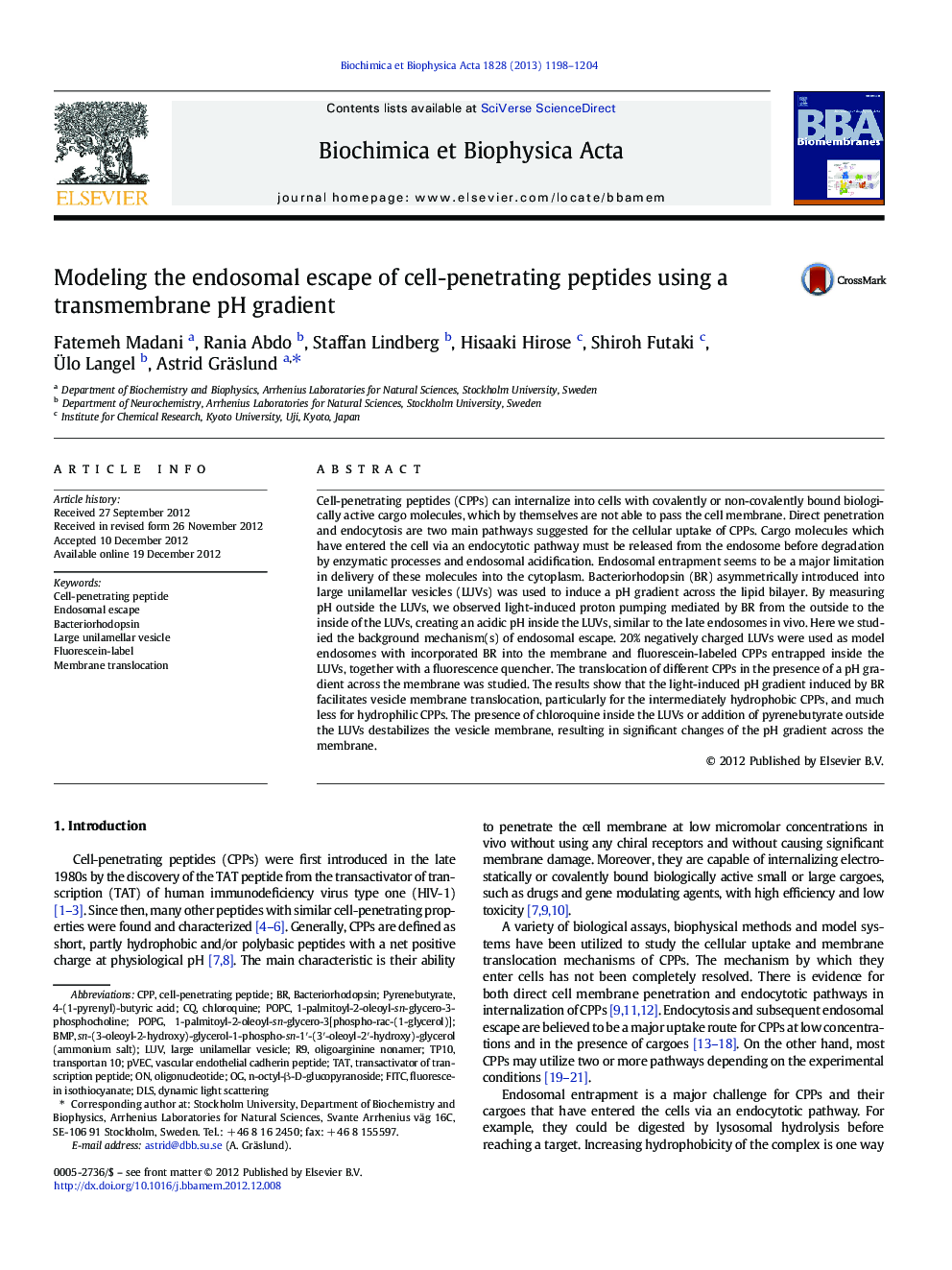| کد مقاله | کد نشریه | سال انتشار | مقاله انگلیسی | نسخه تمام متن |
|---|---|---|---|---|
| 1944334 | 1053208 | 2013 | 7 صفحه PDF | دانلود رایگان |

Cell-penetrating peptides (CPPs) can internalize into cells with covalently or non-covalently bound biologically active cargo molecules, which by themselves are not able to pass the cell membrane. Direct penetration and endocytosis are two main pathways suggested for the cellular uptake of CPPs. Cargo molecules which have entered the cell via an endocytotic pathway must be released from the endosome before degradation by enzymatic processes and endosomal acidification. Endosomal entrapment seems to be a major limitation in delivery of these molecules into the cytoplasm. Bacteriorhodopsin (BR) asymmetrically introduced into large unilamellar vesicles (LUVs) was used to induce a pH gradient across the lipid bilayer. By measuring pH outside the LUVs, we observed light-induced proton pumping mediated by BR from the outside to the inside of the LUVs, creating an acidic pH inside the LUVs, similar to the late endosomes in vivo. Here we studied the background mechanism(s) of endosomal escape. 20% negatively charged LUVs were used as model endosomes with incorporated BR into the membrane and fluorescein-labeled CPPs entrapped inside the LUVs, together with a fluorescence quencher. The translocation of different CPPs in the presence of a pH gradient across the membrane was studied. The results show that the light-induced pH gradient induced by BR facilitates vesicle membrane translocation, particularly for the intermediately hydrophobic CPPs, and much less for hydrophilic CPPs. The presence of chloroquine inside the LUVs or addition of pyrenebutyrate outside the LUVs destabilizes the vesicle membrane, resulting in significant changes of the pH gradient across the membrane.
pH-induced peptide membrane translocation.Figure optionsDownload high-quality image (85 K)Download as PowerPoint slideHighlights
► The background mechanism(s) of endosomal escape are studied.
► Large unilamellar vesicles with membrane inserted bacteriorhodopsin were used.
► Fluorescein-labeled cell-penetrating peptides were encapsulated inside the vesicles.
► Light-induced pH gradient by bacteriorhodopsin caused peptide membrane translocation.
► The response to the pH gradient was stronger for more hydrophobic peptides.
Journal: Biochimica et Biophysica Acta (BBA) - Biomembranes - Volume 1828, Issue 4, April 2013, Pages 1198–1204